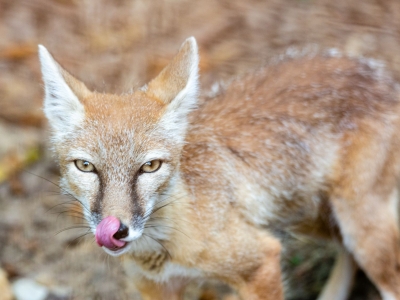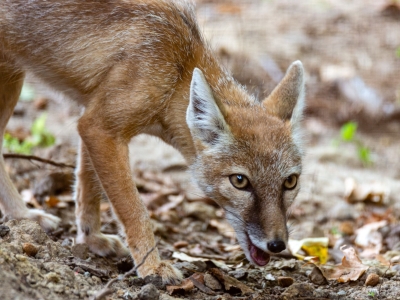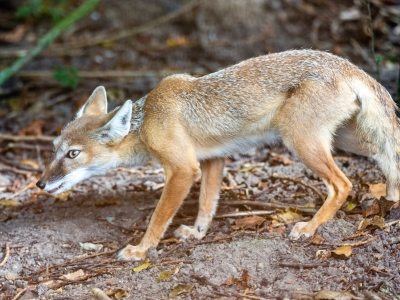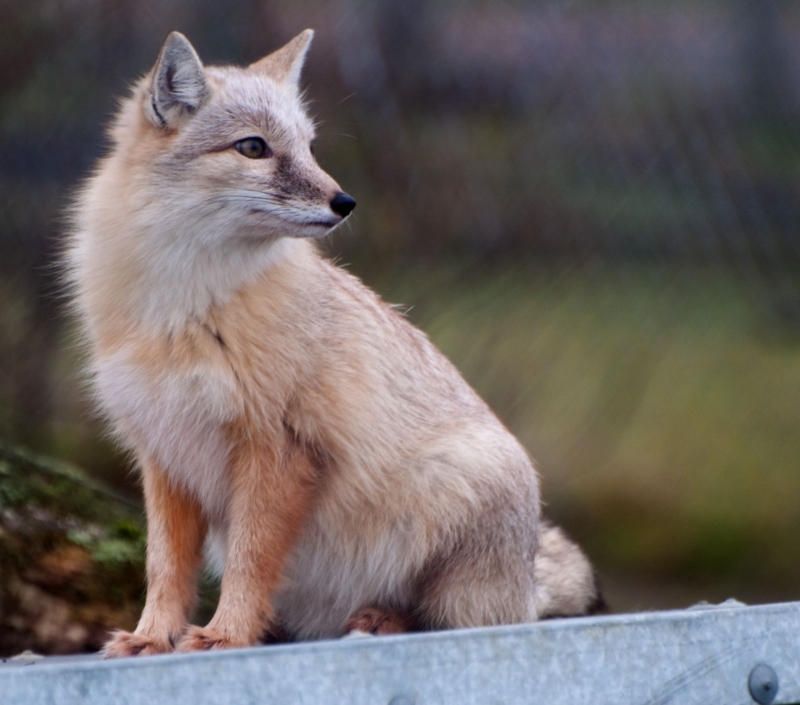Corsac fox Vulpes corsac
Animals in our sanctuary
Cor

Cor, along with two companions, was kept illegally by a private individual. This is how they firstly wound up at Stichting AAP. They went on to look for a permanent home, for which De Zonnegloed was then chosen to accomodate them.
Sac

Sac, along with two companions, was kept illegally by a private individual. This is how they firstly wound up at Stichting AAP. They went on to look for a permanent home, for which De Zonnegloed was then chosen to accomodate them.
Xof

Xof, along with two companions, was kept illegally by a private individual. This is how they firstly wound up at Stichting AAP. They went on to look for a permanent home, for which De Zonnegloed was then chosen to accomodate them.
Habitat
The corsac fox can be found in the steppes, semi-deserts and deserts of central Asia. In those regions, it also sometimes snows, which the corsac fox does not mind too much, as long as it is not too deep. The animal also avoids steep mountains, and of course places where humans are present.
Nutrition
As an opportunistic omnivore, the corsac fox is not picky. It hunts hares, squirrels, gerbils and other rodents, but can also survive on insects, carrion and if nothing else, garbage bins. In addition, especially in winter, it will also eat fruit and other plant material to supplement its diet. Since the species is found in arid regions, it has also evolved to be able to go without food and water for long periods of time.
Appearance
The steppe fox is slightly smaller than the European red fox. Their body can grow up to 65 cm long, with a tail of 35 cm. They weigh up to 3 kg. Their thick fur, especially in winter, means you would quickly estimate this to be higher. The colour is predominantly grey with shades of yellow and white.
Lifestyle
The steppe fox is a nocturnal animal. It also moves around a lot in search of prey and new nests. It therefore does not defend a territory. Towards winter, and when pups also need to be fed, they will also become more active during the day.
Trivia
Compared to other fox species, the corsac fox has relatively small teeth and a broader skull. Corsac foxes also have a less pungent smell than most other foxes. And sometimes it can form a small group with other corsac foxes, also unique among foxes. Their burrows, which they usually dig themselves, can thus form small "cities".
To make things easier for itself, corsac foxes are said to follow the flattened snow paths made by antelopes. That way it doesn't have to plod through deep snow itself. And even though it occasionally digs its own burrow, it also likes to use burrows made by other animals such as marmots.
Reproduction in the wild
Corsac foxes are monogamous. The males will also help raise the young.
The foxes seek each other out during the period from January to the end of March to mate. Corsac foxes make a burrow to make their nest. They sometimes share this with other mothers. After giving birth, however, they may move several times to other dens. After about 60 days of gestation, 2 to 6 young are born. After about 9 months, they become adults.
Threat
Corsac foxes have to watch out for larger predators such as wolves, eagle owls and eagles. The foxes are also not fast runners, which makes them easy to grab. In addition, they are also often hunted for their fur. This is a long-standing tradition in the regions where the fox occurs, with golden eagles also being used to hunt them. As a result, locally there may be few foxes to be found, but the general population appears to be quite resilient to all these dangers. Their habitat also fortunately experiences little pressure from human activity. Because of all these factors, the corsac fox is not considered endangered.





